DOGMAS
Dogmas antinomiques proclaimed during the large councils oecuméniques to struggle against heresies are not truths to believe, but in experiment. Based on the Disclosure, they express the reality divino – human and guide the human being to the contemplation of That that appears. They make the object of a knowledge existentielle, not of a knowledge abstracted. Fundamental dogmas:
1 – The Christ is not a creature: It is the unique fathered of the Father
(Council of Nicée – 325)
This first council oecuménique united concerning the arianisme, theory of Arius, priest of the patriarcat of Alexandrie, who claimed that the Christ is a drawn creature of the nothingness. The council proclaims that the Christ is God, the unique fathered of the Father before all centuries.
2 – The Divine Trinidad: Three divine Persons in An alone God
(Council of Constantinople – 381).
The second council oecuménique united concerning an other heresy who asserted that the Holy Spirit was not of divine nature. The council proclaims that the Father is the unique source of the Divinity: the Son is fathered by the Father before all centuries; the Holy Spirit proceeds the Father before all centuries. This dogma flags the absolute value and irreducible of the multiplicity (three divine Persons) and the unit (an alone divine Nature).
It is on the base of these dogmatic resolutions that these two councils have composed the Symbol of the Faith, tells Nicée-Constantinople (Creed) .
3 – The Virgin Marries is the Mother of God (Theotokos)
(Council of Éphèse – 431)
The council third oecuménique united concerning the nestorianisme, theory of Nestorius, patriarch of Constantinople, who declared that – ” the flesh can father only the flesh… ” – – and that – ” Jesus – Christ could not have been fathered by a woman, the creature being able not to father the Creator ” -. The council proclaims that the Christ is God and Man, and that the Virgin is the Mother of God as for Its humanity. For the orthodox Church, the Mother of God is the first human person that has arrivaled in disjunction perfected with the divinity and achieved in it the last end in order that was created the world: the deification. The Virgin Marries is born as all humans, according to the nature besmirched by the original sin. But, its person has kept consciously virgin of all sin. It was delivered of the ancestral sin when the Holy Spirit descended on it, after its acceptance in order that is accomplished in it the mystery of the Incarnation. The orthodox Church does not admit the dogma of the Church catholic – romaine of the Immaculate Design according to whether Marries is born without being besmirched by the original sin. This doctrine is adverse to the doctrine of the liberty in the salvation and does not staticize the indispensable obedience act for our redemption.
4 – The Christ is God and Man.
Two human and divine natures in Christ
(Council of Chalcédoine – 451)
The fourth council oecuménique united concerning the monophysisme, who did not recognize the two natures – divine and human – in the Person of the Christ. This theory asserted that the human nature is absorbed by the divine Nature in the incarnated Verb. The council proclaims that the Christ, similarly nature that the Father, fathered by the Father before all centuries, is fully God. Born at one time, similarly nature that Its Mother, it is fully Man. Although It is God and Man, Jesus – Christ is a Person of the Divine Trinidad, in which them two natures – divine incréée and human created – coexist. Where in It the two manifestation wills and two energies – incréées and created – without confusion, neither transformation, nor division, neither separation between they, and that are united in and by the Person of Jesus-Christ.
5 – The Christ has two natures
(Constantinople – 553)
The oeuvre of this council is mainly the confirmation of 4e council as for the two natures in Jesus-Christ.
6 – The Christ has two wills and two energies
(Council of Constantinople – 680)
This council was united to debate the monophysisme, theory of several patriarchs of Constantinople and Honorius, pope of Rome, that claimed that in Christ there was only a will and that an energy. The council condemns this heresy and proclaims that there are two wills and two native energies in the Christ, indivises, inseparable and without confusion none, two wills such that the human will follows the divine will and is subordinated it.
7 – The reset of icons
(Council of Nicée – 787)
Hostile Christians to icons, whose Constantin V, patriarch of Constantinople, are gathered to this council where the named heresy iconoclasme is condemned. In memory of the reset of icons, a solemn ceremony is celebrated 11 March 842, first Sunday of Lent. Since this date, the orthodox Church commemorates, first Sunday of Lent – the Triumph of the Orthodoxy – the feast of the Holy Images and the victory achieved on the hérésies.
The orthodox Church – conciliar – lives according to the faith expressed by the conciles.
